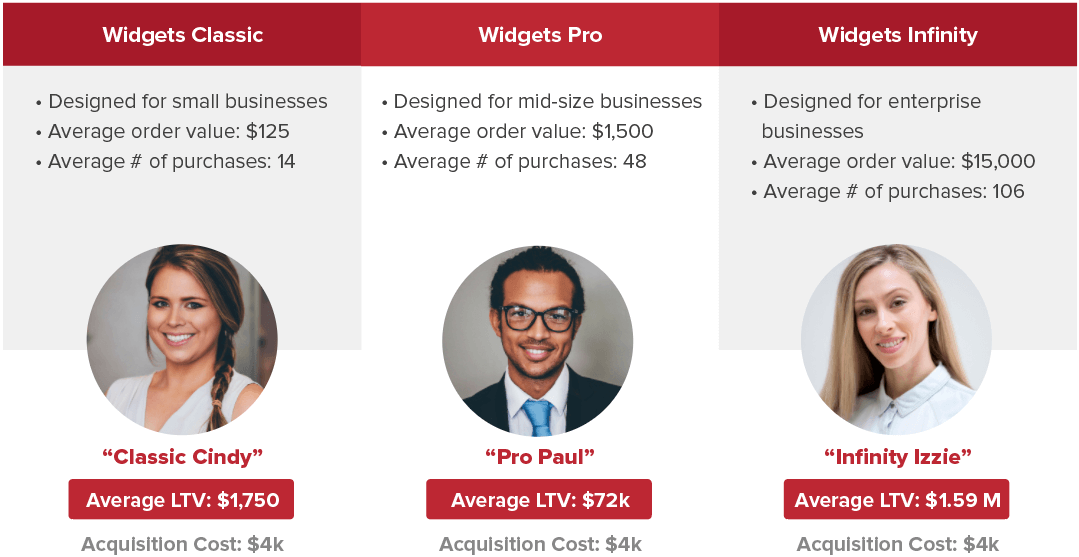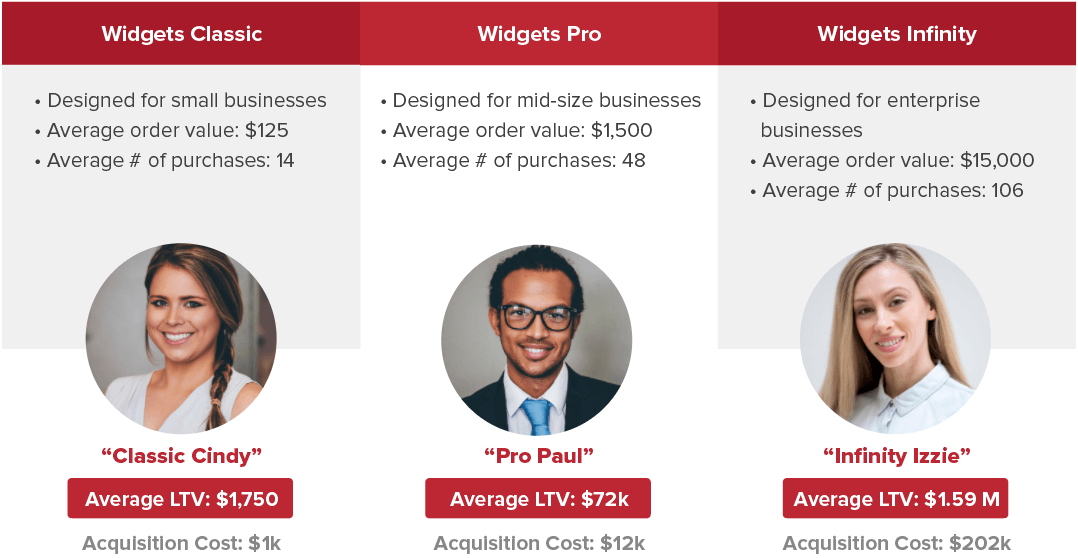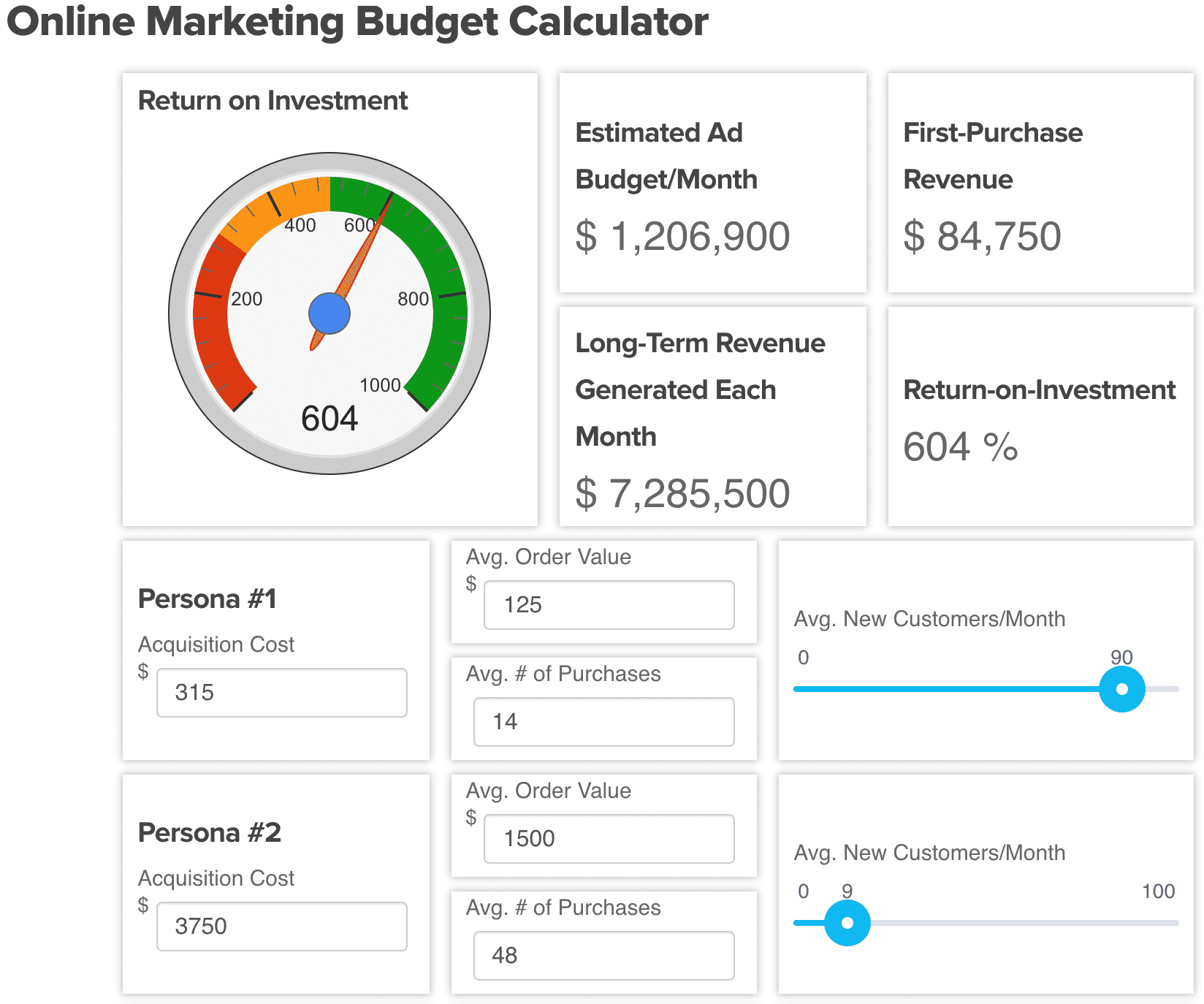by Aden Andrus • November 8, 2019
What Should Your Google Ads Budget Be Next Year?
As the year draws to a close, most companies are hard at work trying to make the most of the holiday shopping season…and put together their Google Ads budget for next year. And it’s not surprising, despite the success of Facebook Ads, Google still accounts for over 30% of all digital ad spend.
But how do you choose the right Google Ads budget for your business?
For a lot of businesses, this question seems pretty straightforward. After all, it’s just simple math, right? If 30% of digital marketing spend goes toward Google Ads, why not just take your digital marketing budget and assign a third of it to Google Ads?
As simple as that approach is, when you dig a little deeper, it quickly becomes clear that this sort of arbitrary equation isn’t the best way to figure out your budget. If your goal is to simply come up with a number, it works, but if your goal is to actually create a Google Ads budget that delivers results, you’re gonna have to dive into things a bit deeper.
That being said, choosing the right Google Ads budget for your business is fairly easy…as long as you know what you’re doing. And, in this article, we’re going to help you do just that. With a little research and a few calculations (don’t worry, I’ve included a calculator in this article to help with that), picking a meaningful Google Ads budget for next year will be a cinch!
Getting Started
Before you start crunching numbers, though, you need to answer a simple question: How much money do I need to make from Google Ads next year?
The whole point of Google Ads is to make money. So, if you don’t know how much money you want to make or what your profit margins need to be, you can’t really put together a meaningful Google Ads budget.
By the way…
If you’d like some personalized help figuring out how to make the most of your Google Ads budget and campaigns, click here to send us a message! We’d be happy to jump on a call and help you figure out how to win at Google Ads.
Unfortunately, most businesses don’t really think about their budget in these terms. Instead, they’re based on arbitrary things like percentage of revenue or metrics like clickthrough rate (CTR), cost-per-click (CPC) or cost-per-conversion.
As useful as these metrics are, they’re a little bit off the mark. Sure, they help you estimate your costs, but they don’t really tell you how much money you’ll make from Google Ads. A budget built around costs—not goals—won’t do a whole lot to help you get meaningful results.
Why Your Revenue and ROI Goals Matter
Budgeting based on your expected costs is like saying, “Here’s how much money I want to give Google.” It’s easy to spend money on Google Ads. Making money from Google Ads takes a lot more thought, planning and effort.
Sadly, according to results from a survey we conducted a while back, just 41% of businesses actually use their financial goals when planning their Google Ads budget. Cost-based metrics like conversion rates, however, influenced 60-80% of budgeting decisions.
Here are some additional results from the survey:
![Does Your Online Marketing Budget Really Make Sense [INFOGRAPHIC] | Disruptive Advertising](https://wp.disruptiveadvertising.com/wp-content/uploads/2016/11/marketing-budget-infographic-small.jpg)
As depressing as this data is, it’s actually good news for you. When almost everyone is doing things the wrong way, if you approach things the right way, you can get way better results than your competitors.
So, before we get into the details of creating your Google Ads budget, make sure that your revenue and ROAS goals for Google Ads are clear. You may have to do a little digging and research, but if you don’t know what your goals are, any budget you come up with won’t be very effective.
Defining Your Customers
Now, if you’re wondering, “Why are we talking about my customers in a blog post about budgeting?”, don’t worry, it’ll all make sense in a minute. The secret to creating an effective Google Ads budget is actually…your buyer personas.
Who Are You Selling To?
To explain why your buyer personas are the secret to your Google Ads budget, let’s run through a little hypothetical scenario. For the purposes of this article, let’s imagine that you’re the marketing director for ACME Widgets.
Now, ACME sells the best widgets in the world. In fact, your widgets are so good that your average customer lifetime value (LTV) is a whopping $24,000.
As you plan out next year’s Google Ads budget, you start by reviewing this year’s performance and realize that you blew over 40% of your budget on a campaign that produced less than 1% of your sales. Since you spent an average of $4,000 per sale this year on Google Ads, you’ve just discovered a gigantic money pit, right?
After all, if 40% of your ad spend is producing 1% of your sales, why not cut your Google Ads budget by 40%? What a find!
But, you’ve read this article, so before you make any final decisions, you decide to take a closer look at the data. You see, ACME has three different buyer personas, each with their own LTV:

While evaluating that embarrassingly expensive Google Ads campaign, you suddenly realize something: it’s the only campaign yielding “Infinity Izzies” sales. It might represent just 1% of your sales, but this campaign is responsible for 59% of your Google Ads revenue.
Getting rid of that campaign would have reduced your ad spend by 41%…and wiped out most of your Google Ads revenue.
Do you see why your buyer personas are such an important part of your Google Ads budget? Different buyer personas respond to different types of ads and campaigns. If you don’t know which buyer personas come from which campaigns (and how much it costs to produce a new sale from each type of persona), you can easily end up creating a budget that optimized for the wrong things.
Budgeting for Your Personas
A good Google Ads budget starts with your revenue and profit goals, but to figure out how to achieve those goals, you need to understand your different buyer personas and what you can afford to spend to acquire a new customer from each persona.
In the case of our ACME Widgets example, here are some acquisition cost goals you might set for each of your buyer personas:

With these numbers in hand, everything becomes a lot clearer. You can spend over 200x more to acquire a new “Infinity Izzie” customer than you can on a “Classic Cindy”—all while maintaining a way higher profit margin.
If your Google Ads budget decisions were based on your average acquisition cost of $4,000, you’d make very different decisions, but when you account for your different buyer personas, it’s suddenly obvious that a simple metric like that isn’t the right way to approach things.
Sadly, buyer personas are woefully under-used—especially when it comes to creating your marketing budget. Most marketers know what buyer personas are, but just 30% actually use them effectively.
Is it any wonder that most Google Ads budgets feel like they’re pulled out of a hat?
When you base your Google Ads budget on arbitrary numbers or percentages, you miss the bigger picture. Your Google Ads budget needs to be directly tied to your customers and what they’re worth. Otherwise, you’re just guessing…and that’s not a very effective way to market your business.
Creating Your Google Ads Budget
Alright, now that we’ve covered goals and buyer personas, it’s time to actually get to the fun part: creating your Google Ads budget. At this point, it’s all just basic math, so here’s a free calculator you can use to figure out your monthly Google Ads budget:
To calculate how much you need to spend on Google Ads to hit your goals, simply enter your average acquisition cost, average order value (or service contract price, for a service business) and the average number of purchases for each buyer persona. Then, using the slider on the right, you can adjust the number of new customers you expect to acquire each month from that buyer persona.
This calculator allows you to calculate a budget for up to 4 buyer personas, but if you want to use fewer personas than that, just drag the sales sliders to zero for any buyer persona slots you aren’t using.
Once you’ve entered all of the relevant information, the calculator will do the rest! Up at the top, you can see what your monthly Google Ads budget will need to be to achieve your goals, along with how much initial and long-term (aka, LTV) revenue you can expect from your investment. How much easier can it get?
Conclusion
Can you pick an arbitrary Google Ads budget and just run with it? Sure, but most of the time, you’ll be doing more harm than good.
If you really want to get the most out of your Google Ads campaigns, you need to figure out what your goals are and then invest some time and effort into understanding your different buyer personas. But, once you have that data in hand, it’s actually easy to create a meaningful Google Ads budget. Instead of pulling your budget out of a hat, you’ll be creating an intentional budget that will help your business get where you want to go.
Incidentally, if you need a little extra help, why not reach out to us here! We’d love to help you figure out how to make the most of your Google Ads next year. Why not let us audit your Google Ads account for free?
What do you think of this approach? Does it make sense to you? Any Google Ads budgeting tips you’d like to share? Leave your thoughts in the comments below.






